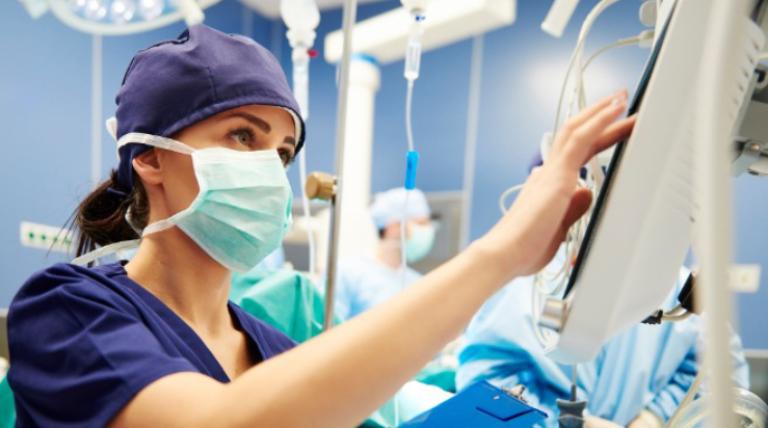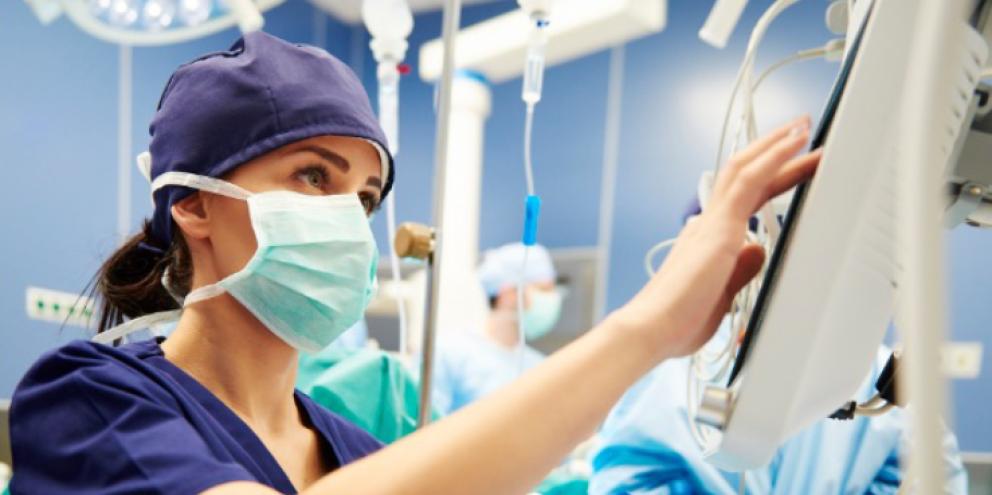
Utilizing indirect calorimetry (IC) measurements can improve how well energy expenditure and caloric needs are managed in critically ill patients.
Determining the caloric needs for critically ill patients has always been a challenge. In addition to unpredictable patient needs that can vary based on the severity of illness, there are a multitude of other factors that impact energy expenditure (EE) and subsequent energy needs.1
Underfeeding is a major issue in the ICU with only 50-60% of patients receiving their nutritional prescription. This is compounded by the fact that nearly half of all patients admitted to the ICU are already malnourished, contributing to higher morbidity and mortality.2,3
When attempting to predict specific metabolic responses, a frequent practice is to overfeed the patient in an attempt to ensure caloric needs are met. However, overfeeding carries its own set of consequences and is not always an ideal solution.1
In fact, there is a U-shaped relationship with mortality when it comes to both under- and overfeeding – too much in either direction can be detrimental.4 Ideally, meeting the EE needs of the patient at a 70% rate provides the best survival outcomes, which can be difficult to consistently achieve.
Thankfully with indirect calorimetry, EE can be determined and measured. With indirect calorimetry, individualized and precision nutrition for patients can be achieved. In this article we will discuss the dynamics of fluctuating nutritional needs and how to best manage them with indirect calorimetry.
Factors Impacting Energy Expenditure and Caloric Needs
Predicting metabolic rates in critically ill patients is a moving target, and one that cannot be ascertained with verifiable accuracy. Patient demographics, disease processes, acute metabolic stress, magnitude and duration of illness, and baseline nutritional status can all play a role in how much energy is required at any given point.
When it comes to decreasing EE here are some of the more prevalent factors:1
- Lower lean body mass
- Paralysis
- Hypothermia
- Medications including beta blockers, sedatives, and muscle relaxers
A few factors known to increase EE include:1
- Physical exercise and exertion
- Hyperthermia (fever)
- Stress
- Systemic inflammation and sepsis
As with many critically ill patients requiring ICU care, they can experience any number of these factors within a short period of time. As an example, stress from injury or inflammation can increase EE in one hour, and then medications to manage symptoms can decrease EE in the next hour.1
This highlights the need for frequent monitoring of caloric needs, using EE to predict the nutritional requirements of these patients more accurately. And this is where indirect calorimetry can provide substantial insights into what those exact requirements are.
What is Indirect Calorimetry
Indirect calorimetry measures energy expenditure and respiratory quotient (RQ) by measuring respiratory gas exchange.1 By monitoring both the consumption (inhalation) of oxygen (VO2) and production (exhalation) of carbon dioxide (VCO2), a real-time measurement of energy metabolism can be made.
In comparison, direct calorimetry measures heat production rather than respiratory gas exchange and is not a practical clinical solution.1 In clinical practice, indirect calorimetry is calculated using an abbreviated Weir‘s equation, which omits the need for urinary nitrogen measurements.1
The Weir’s equation consists of applying “caloric values of the oxidation of 1L of oxygen metabolizing a fat and carbohydrate mixture” to determine resting energy expenditure (REE).1
In addition to REE, indirect calorimetry can calculate a respiratory quotient (RQ). By calculating the RQ (VCO2/VO2), more information can be gathered regarding specific macronutrient use by the patient.1
Considerations When Implementing Indirect Calorimetry
While there are few limitations to indirect calorimetry, it is important to recognize factors that can influence results. Use and adherence to a standard protocol or IC policy is beneficial.
Keeping patients in a ‘steady-state’ is ideal to generate accurate readings. Ideally the patient should not be under any stress from either physical or emotional causes nor have been recently fed prior to IC measurements.1 Additionally, there should not be any changes to medications or introduction of sedatives and muscle relaxers 30-60 minutes prior measurements as these can decrease the perceived EE needs.1 Since body temperature changes can impact energy expenditure needs, if there is a greater than 1 degree Celsius change in temperature prior to indirect calorimetry reading, the results may be skewed.1 Due to these factors, performing frequent IC measurements can generate a more accurate assessment of the patient’s caloric needs.
Indirect Calorimetry-Guided Caloric Delivery Significantly Reduces Short-Term Mortality4
Predictive equations and models for EE tend to be inaccurate and can lead to overfeeding. Overfeeding continues to be an issue and contributes to unwanted outcomes, including longer ICU stays, infection rates, and mechanical ventilation duration.4 More studies are illustrating the benefits of using indirect calorimetry to help generate a personalized nutrition plan.
In a recent meta-analysis, nutritional requirements for ICU patients that were guided by indirect calorimetry showed a 23% reduction in mortality rate4 and had an overall better prognosis. Patients in the indirect calorimetry groups also had smaller energy deficits, which helped reduce infection complications.4 Consequently, minimizing a patient’s energy deficit is critical to meeting their nutrition needs, often preventing unwanted outcomes.
Summary
- Meeting the nutritional needs of critically ill patients is complex.
- There are several factors that can increase or decrease the energy expenditure (EE) of patients and current predictive equation models are often inaccurate.
- Indirect calorimetry monitoring provides a real-time measurement of EE to guide nutrition planning.
- While there are limitations to indirect calorimetry, patients can have better outcomes and lower mortality when their nutritional needs are more accurately monitored and subsequently met.
References
- Moonen, H, Meckers, K, Zanten A. (2021). Energy expenditure and indirect calorimetry in critical illness and convalescence: current evidence and practical considerations. Journal of Intensive Care. 9:8.
- McClave, et al. (2016). Guidelines for the Provision and Assessment of Nutrition Support Therapy in the Adult Critically Ill Patient: Society of Critical Care Medicine (SCCM) and American Society for Parenteral and Enteral Nutrition (A.S.P.E.N.). Journal of Parenteral and Enteral Nutrition. 40(2). 159-211.
- Correia, M et al. (2014). Evidence-Based Recommendations for Addressing Malnutrition in Health Care: An Updated Strategy From the feed M.E. Global Study Group. JAMDA. 15 544-550.
- Duan, J, et al. (2021). Energy delivery guided by indirect calorimetry in critically ill patients: a systematic review and meta-analysis. Critical Care. 25:88.
© GE, 2021 – All rights reserved.
GE and the GE Monogram are trademarks of GE. Reproduction in any form is forbidden without prior written permission from GE. Nothing in this material should be used to diagnose or treat any disease or condition. Readers must consult a healthcare professional. JB17795XX








